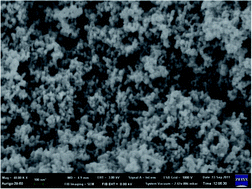A binder-free process for making all-plastic substrate flexible dye-sensitized solar cells having a gel electrolyte†
Abstract
Binder-free

* Corresponding authors
a
Department of Materials Science and Engineering, National Cheng Kung University, Tainan, Taiwan
E-mail:
jting@mail.ncku.edu.tw
b Institute of Nanotechnology and Microsystems Engineering, National Cheng Kung University, Tainan, Taiwan
c Center for Micro/Nano Science and Technology, National Cheng Kung University, Tainan, Taiwan
d Department of Chemical Engineering, National Cheng Kung University, Tainan, Taiwan
Binder-free

 Please wait while we load your content...
Something went wrong. Try again?
Please wait while we load your content...
Something went wrong. Try again?
L. Chen, J. Ting, Y. Lee and M. Hon, J. Mater. Chem., 2012, 22, 5596 DOI: 10.1039/C2JM15360B
To request permission to reproduce material from this article, please go to the Copyright Clearance Center request page.
If you are an author contributing to an RSC publication, you do not need to request permission provided correct acknowledgement is given.
If you are the author of this article, you do not need to request permission to reproduce figures and diagrams provided correct acknowledgement is given. If you want to reproduce the whole article in a third-party publication (excluding your thesis/dissertation for which permission is not required) please go to the Copyright Clearance Center request page.
Read more about how to correctly acknowledge RSC content.
 Fetching data from CrossRef.
Fetching data from CrossRef.
This may take some time to load.
Loading related content
